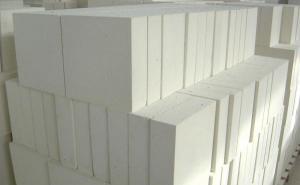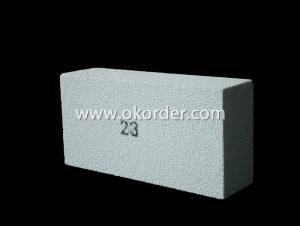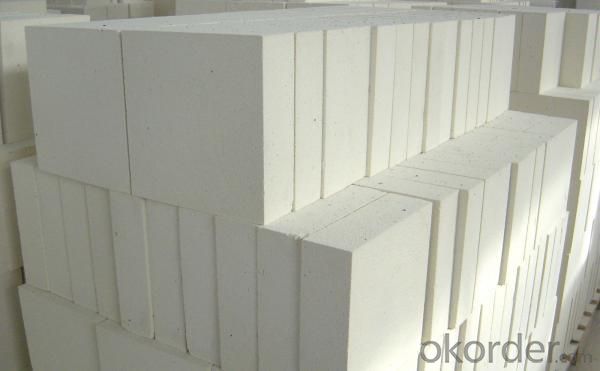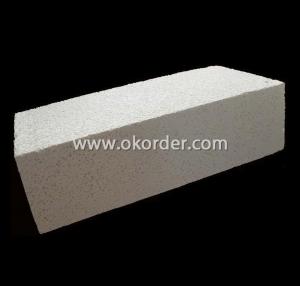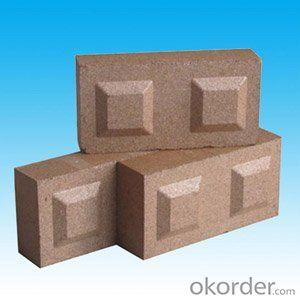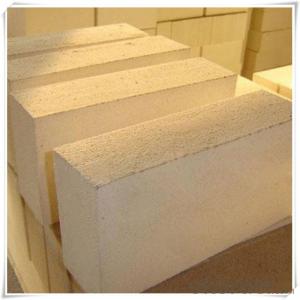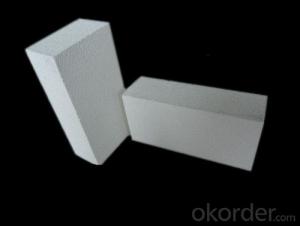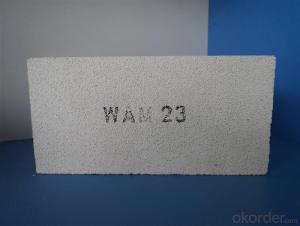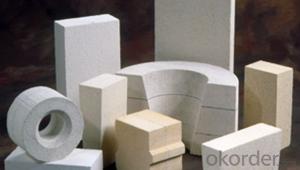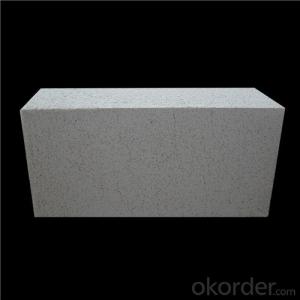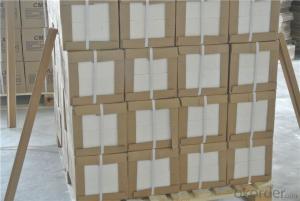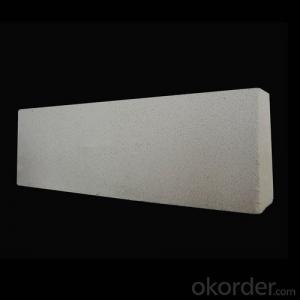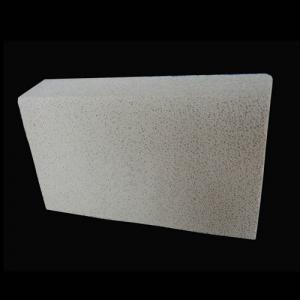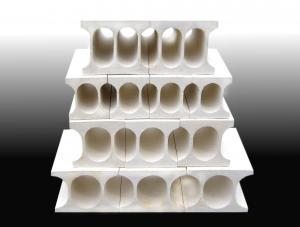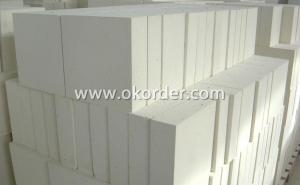Insulating Fire Brick - GJM23
- Loading Port:
- China Main Port
- Payment Terms:
- TT or L/C
- Min Order Qty:
- 1000 pcs pc
- Supply Capability:
- 1000 Tons Per Month pc/month
OKorder Service Pledge
OKorder Financial Service
You Might Also Like
General Information of Insulating Fire Brick GJM23
Insulating fire bricks GJM23 are made from high purity alumina and low iron content raw materials. The insulating fire bricks are produced by mixing, casting or extruding, drying, sintering and grinding. Our insulating fire bricks GJM23 temperature is 1260℃(2300℉). A variety of type could be done according to customer’s request.
To make our firebricks more energy and cost effective, we have different manufacturing methods for our insulating fire bricks casting and extruding method.
For insulating fire bricks GJM23,we choose the casting methord.The casting insulating fire bricks offering the lowest density, the lowest thermal conductivity for the application above 1000℃.
Characteristics of Insulating Fire Brick GJM23
Our insulating fire bricks exhibit the following characteristics:
Light weight and low thermal conductivity allows thinner furnace walls
Low heat storage results in rapid cooling and heating operation
Low iron and impurities to enhance reducing atmosphere
Typical Application of Insulating fire bricks GJM23
Ceramic shuttle kilns
Oil refinery heaters
Laboratory furnaces
Backup insulation for all furnaces
Technical Data of Insulating fire bricks GJM23
|
| JM23 |
Physical Properties: |
|
|
Classifiction Temperature | ℃ | 1260.0 |
Density | Kg/m3 | 550.0 |
Cold Crushing Strength | Mpa | 1.2 |
Reheating Linear Change(24hrs) |
|
|
1230℃ | % | 0.4 |
Hot Load Strength Deform(90 minutes) |
|
|
1100℃ at 0.034 Mpa(5psi) | % | 0.1 |
Thermal Conductivity |
|
|
400℃ | W/m.k | 0.2 |
600℃ | W/m.k | 0.2 |
800℃ | W/m.k | 0.2 |
1000℃ | W/m.k | 0.2 |
Specific Heat | KJ/Kg.K | 1.1 |
Chemical Analysis: |
|
|
Al2O3 | % | 47.0 |
SiO2 | % | 44.4 |
Fe2O3 | % | 0.9 |
TiO2 | % | 1.2 |
CaO | % | 5.2 |
MgO | % | 0.3 |
Na2O+K2O | % | 1.1 |
CNBM has success in insulating fire bricks due to their cost-effectiveness, excellent insulation properties. CNBM also has experience in insulating fire bricks application and would like to assist you in product selection, system design, and installation techniques.
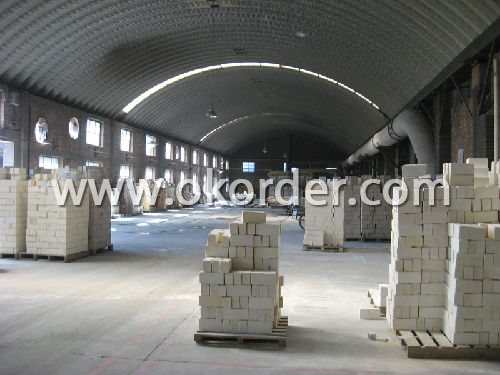
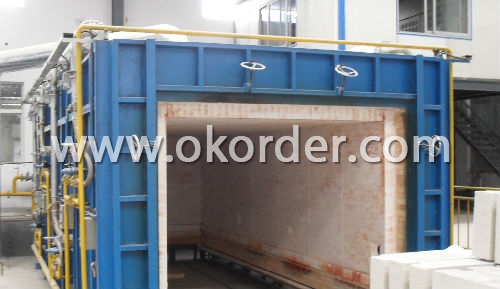
- Q: The project cost in hydropower No.3 shaft wall is solid brick or insulating brick?
- From the structure principle, hydropower shaft with solid brick, is to consider the safety performance of the structure.
- Q: What is the price of fireproof insulation material?
- A preliminary understanding of price through online preliminary understanding, now generally the size of the opening of the cable insulation material manufacturers are on business, early online now have a preliminary understanding, manufacturers investigation after considering cooperation.
- Q: Do insulating fire bricks require any special insulation blankets or jackets?
- Yes, insulating fire bricks do require special insulation blankets or jackets in order to enhance their insulating properties and protect them from heat loss and damage. These blankets or jackets help to create a barrier that prevents the transfer of heat, ensuring maximum insulation and energy efficiency.
- Q: Are insulating fire bricks resistant to spalling?
- Insulating fire bricks exhibit resistance to spalling. These bricks are specially engineered to endure elevated temperatures and thermal shock, rendering them highly immune to spalling. Spalling indicates the fracturing and fracturing of bricks owing to exposure to extreme heat. Composed of superior refractory materials with low thermal conductivity, insulating fire bricks restrict heat transmission and diminish spalling hazards. Moreover, these bricks boast a remarkable melting point, rendering them excellently suited for applications demanding high temperatures. Consequently, insulating fire bricks find widespread application in furnaces, kilns, and other environments characterized by elevated temperatures, where spalling poses a significant concern.
- Q: Can insulating fire bricks be used in the construction of steam generators?
- Yes, insulating fire bricks can be used in the construction of steam generators. These bricks are designed to withstand high temperatures and provide insulation, making them suitable for applications such as steam generators where heat retention is important.
- Q: Are insulating fire bricks chemically resistant?
- Yes, insulating fire bricks are chemically resistant. They are composed of high-temperature materials that can withstand harsh chemical environments without undergoing significant chemical reactions or degradation. This resistance makes them suitable for various industrial applications where exposure to chemicals is a concern.
- Q: Can insulating fire bricks be used for structural purposes?
- No, insulating fire bricks are not typically used for structural purposes. They are designed primarily for thermal insulation and are not as strong or durable as regular bricks used in construction.
- Q: Can insulating fire bricks be used in thermal insulation panels?
- Yes, insulating fire bricks can be used in thermal insulation panels. Insulating fire bricks are made from lightweight materials such as clay, alumina, and silica, which have excellent thermal insulation properties. These bricks are designed to withstand high temperatures and provide insulation in various applications, including furnaces, kilns, and industrial equipment. When used in thermal insulation panels, insulating fire bricks can help reduce heat transfer and improve energy efficiency. They can effectively trap and reflect heat, preventing it from escaping or entering the insulated area. This makes them suitable for insulating walls, roofs, and other structures where thermal insulation is required. Moreover, insulating fire bricks are easy to install and can be cut or shaped to fit different spaces and configurations. This flexibility allows for customization and ensures a tight and efficient insulation barrier. It is worth noting that while insulating fire bricks provide excellent thermal insulation, they may not be as effective in sound insulation. Therefore, if soundproofing is also a requirement, additional soundproofing measures may need to be taken. Overall, insulating fire bricks are a reliable choice for thermal insulation panels, offering high insulation performance, durability, and versatility.
- Q: Can insulating fire bricks be used in the construction of lime production linings?
- Yes, insulating fire bricks can be used in the construction of lime production linings. Insulating fire bricks are designed to have low thermal conductivity, which makes them excellent for applications where heat insulation is required. In lime production, high temperatures are required for the calcination process. Using insulating fire bricks in the construction of lime production linings helps to reduce heat loss and improve energy efficiency. Additionally, insulating fire bricks are lightweight and easy to handle, which makes them suitable for lining various parts of lime kilns and other equipment used in the lime production process. Overall, using insulating fire bricks in lime production linings can help to optimize the production process and improve the overall performance of lime production facilities.
- Q: Is it possible to paint or coat insulating fire bricks?
- Yes, it is possible to paint or coat insulating fire bricks. However, it is important to use heat-resistant paints or coatings that can withstand high temperatures. Regular paints or coatings may not be suitable as they can crack or peel due to the intense heat. It is recommended to consult with a professional or refer to the manufacturer's guidelines to ensure the correct type of paint or coating is used for insulating fire bricks.
1. Manufacturer Overview
| Location | Shandong, China |
| Year Established | 2007 |
| Annual Output Value | Above US$ 5 Million |
| Main Markets | 10.00% Northern Europe 30.00% North America 30.00% Eastern Asia 5.00% Africa 10.00% Southeast Asia 15.00% Western Europe |
| Company Certifications | ISO 9001:2008 |
2. Manufacturer Certificates
| a) Certification Name | |
| Range | |
| Reference | |
| Validity Period |
3. Manufacturer Capability
| a) Trade Capacity | |
| Nearest Port | Qingdao Port |
| Export Percentage | 90% |
| No.of Employees in Trade Department | 10 |
| Language Spoken: | English; Chinese |
| b) Factory Information | |
| Factory Size: | Above 16,000 square meters |
| No. of Production Lines | Above 3 |
| Contract Manufacturing | OEM Service Offered; Design Service Offered |
| Product Price Range | High; Average |
Send your message to us
Insulating Fire Brick - GJM23
- Loading Port:
- China Main Port
- Payment Terms:
- TT or L/C
- Min Order Qty:
- 1000 pcs pc
- Supply Capability:
- 1000 Tons Per Month pc/month
OKorder Service Pledge
OKorder Financial Service
Similar products
Hot products
Hot Searches
Related keywords
